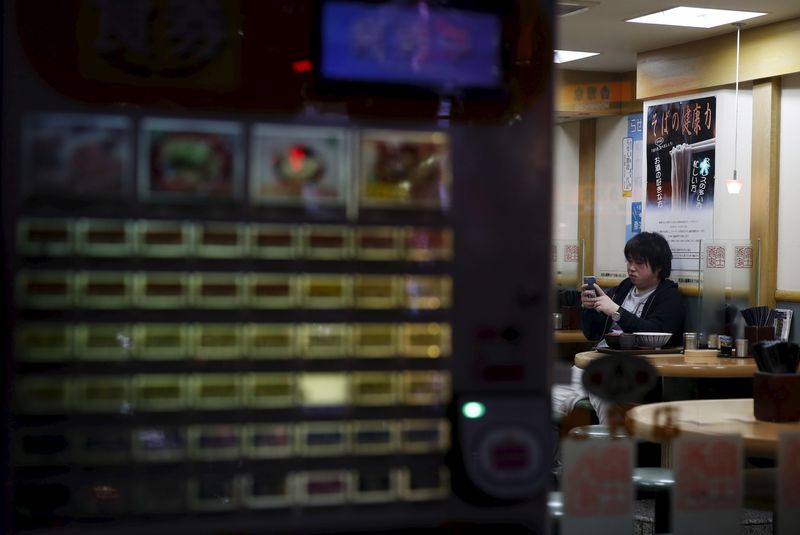By Elaine Lies and Akiko Okamoto
TOKYO (Reuters) - Ryu Ishihara will soon be raising prices on his inexpensive bowls of soba noodles for the first time in nearly a decade, as rising costs and Russia's invasion of Ukraine take an unlikely toll on Japan's beloved buckwheat noodles.
Though seen as one of the most quintessential of Japanese foods - and eaten on New Year's Eve for good luck - a good part of the buckwheat that goes into the noodles comes from Russia, globally the top buckwheat producer.
Russian buckwheat can still be imported, but instability and shipping disruptions have hampered and delayed procurement. That has added to the pain for soba shop owners such as Ishihara who are already suffering as a global surge in commodity prices, coupled with the yen's plunge, has sent prices climbing.
Soy sauce, flour, the vegetables used for tempura toppings and even the fish used for the broth have all risen in cost.
"The suppliers did all they could, but this time the situation's so bad there's no way to avoid raising prices. There are things I'll have to raise by 10 to 15 percent," Ishihara said in his narrow shop, steaming vats of water behind him.
Soba is famous as a cheap meal served cold or hot, often slurped quickly by workers and students in narrow shops that may cut costs by doing without seats. The noodles' low calorie count and nutritious vitamin and mineral content makes them healthy too.
Ishihara's prices run from 290 yen ($2.25) up to 550 yen, with add-ons such as tempura and sets with rice costing more.
"Now, with the war, the cost of importing the buckwheat too has gone up," he said.
Despite soba's iconic status, Japan in 2020 produced only 42% of its buckwheat needs, according to the Japan Soba Association. The gap is filled by imports, with Russia the third-largest source of buckwheat from 2018, according to the Agriculture Ministry.
In 2021, Russia rose to second, displacing China, and up until February it was No. 1.
Then it invaded Ukraine, adding to the surge in commodities prices, while Japan's yen meanwhile plunged to a 20-year low. On top of that, sanctions and crackdowns on the Russian banking system, which have frozen Moscow out of international finance, have made it more difficult to settle some accounts.
The result has been headaches for soba importers and millers like Hua Yue at the purchasing department of Nikkoku Seifun Co Ltd in Matsumoto, a city in the traditional soba-producing area of Nagano.
Her company imports buckwheat seeds from Russia, as well as other nations including China, in 800- to 1,000-tonne sacks, though she declined to give exact amounts or percentages of how much each country provides.
So far, the biggest problems have been delays and a 30% rise in the price of Russian buckwheat over the last six months, though that's partly due to an export stoppage last year that was resolved.
With Russia producing half the world's buckwheat, problems mean demand will shift to second-biggest producer China. But with China cutting buckwheat production every year, prices are likely to rise further.
"So it may become hard to eat soba at low-cost places," she added.
Ishihara's faithful customers, such as Keidai Fukuhara, who comes twice a week, shrug higher prices off. But even they may have their limits.

"It'll still be all right," the 27-year-old office worker said. "That is, if the prices stay around 500 yen."
($1 = 128.65 yen)